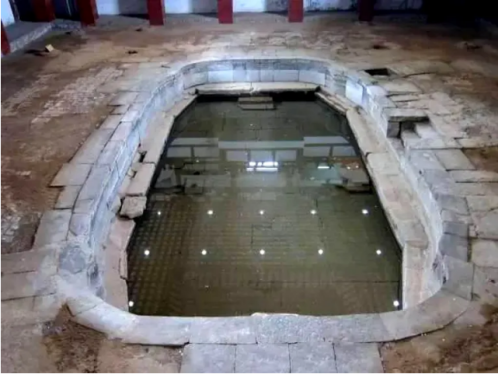
Nowadays, bathhouses have become popular venues for socializing and relaxing, especially among young people in urban China. They offer bathing and showering options, from basic showers to saunas (桑拿浴), to help people relax. Many bathhouses now also provide snacks, light meals, refreshments, and buffets. Some even let you watch movies while you relax, making the experience even better. Do you know how people have bathed throughout Chinese history?
The earliest written record of Chinese bath culture dates back to the Shang Dynasty (1700– 1027BC). At that time, bathtubs were typically made from bronze or timber. According to the Rites of Zhou, it was a requirement for the government officials of the Zhou era to wash their hair every three days and take a bath every five days. Entering the Han Dynasty (206BC–220AD), the government offered the officials to take a day off every five working days for having a bath. Later in the Tang Dynasty (618-907), the bath day was between every ten working days.
2,000 years ago, warm rice water was the most popular body wash gel (凝胶) among Chinese ladies. Came to the 3rd century, “bath bean”, specially made with mixed navy bean powder, five scented dried plants and flowers, medicinal herbs, egg white, pig pancreas and flour, emerged, which not only strengthened the washing ability but also nourished the skin. The ingredients and formula to make the bath bean are explained in detail in Sun Simiao’s Treasured Prescriptions, a book published in the mid-7th century about traditional Chinese medicine clinical diagnosis and prescriptions. During the Song Dynasty, the rise in popularity of commercial public bathrooms saw the mass production of Fat Bean, a soap made with oily fruits and bath beans, which could be easily purchased from most grocery stores.
To ancient Chinese, taking a bath was not just to keep personal hygiene (卫生) but to observe civil conduct.
原创编写 版权所有 侵权必究! 每日更新 个性化阅读 英语飙升!
1.1. How did the frequency of bathing days for officials change from the Zhou Dynasty to the Tang Dynasty?
A It decreased from every three days to every ten days.
B It decreased from every five days to every ten days.
C It remained the same throughout the dynasties.
D It changed frequently between every three and every five days.
解析:选B。推理判断题。根据第二段内容可知,在周朝时期,官府每五天给官员放假一天,专门用来洗澡,而在唐朝时期,“五日休沐”改为“十日休沐”。因此,休沐的频率从每五天一次减少到每十天一次。故选B。
2.2. What was the primary purpose of using “bath bean”?
A To cleanse and nourish the skin.
B To improve the taste of bathwater.
C To serve as a traditional medicine.
D To replace the use of soap.
解析:选A。推理判断题。根据第三段的“which not only strengthened the washing ability but also nourished the skin”可知,澡豆不仅能清洁身体还能滋养皮肤。故选A。
3.3. During which dynasty did commercial bathhouses become popular?
A Shang Dynasty.
B Zhou Dynasty.
C Han Dynasty.
D Song Dynasty.
解析:选D。细节理解题。根据第三段的“During the Song Dynasty, the rise in popularity of commercial public bathrooms saw the mass production of Fat Bean”可知,古代中国商业性的浴室最早出现于宋代。故选D。
4.4. What’s the main idea of the text?
A How people keep their bodies clean.
B Why bathhouses became popular.
C Ancient Chinese bath culture.
D A way to observe civil conduct.
解析:选C。主旨大意题。根据第一段最后一句“Do you know how people have bathed throughout Chinese history?”以及文章内容可知,本文主要介绍了古代中国的洗浴文化。故选C。